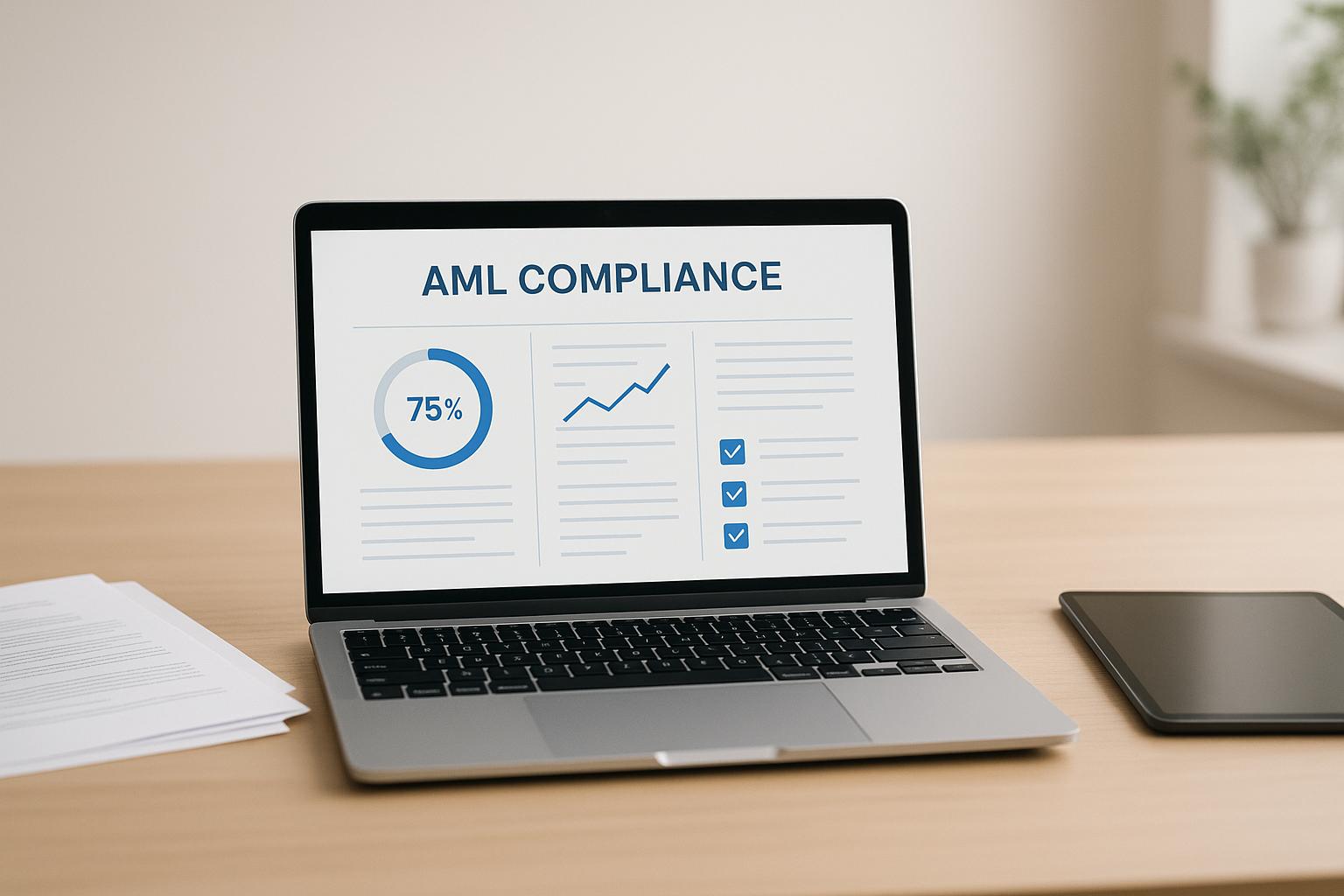Digital piracy costs businesses billions annually, but content analytics is changing the game. By using AI-powered tools, companies can detect and respond to stolen content within minutes. These systems monitor millions of online platforms, identify modified or copied content, and automate takedown processes. Key features include:
- Real-Time Monitoring: AI scans the web to detect pirated material, even if altered.
- Invisible Watermarking: Embeds undetectable marks to trace leaks and prove ownership.
- Web Scraping: Searches platforms, including social media and the dark web, for stolen content.
- Automated Takedowns: Instantly generates and sends removal requests.
Blockchain verification adds legal strength by creating tamper-proof ownership records. Combining these tools allows businesses to protect their assets, reduce piracy damage, and act quickly against digital theft.
Video Security – How to prevent digital piracy,OTT content thefts with CONTUS VPlayed’s Secure tools

Core Features of Content Analytics for Anti-Piracy
Content analytics systems bring together cutting-edge technologies to combat digital piracy. These tools work in harmony to identify, analyze, and address unauthorized use of content across the digital world.
Real-Time Content Monitoring and Detection
AI-driven systems scan millions of online platforms and pages, identifying pirated content within minutes – even if it has been altered. Using advanced pattern recognition, these tools can detect modified, compressed, or partially edited versions of your original content. Whether it’s images, videos, or documents, these systems spot unauthorized usage with precision.
Real-time alerts ensure content owners are notified immediately when piracy is detected. These alerts provide crucial details, such as where the content was found, the time it was posted, and how closely it matches the original. Acting quickly is essential since the longer pirated material remains online, the greater the potential damage to revenue and brand reputation.
To further safeguard assets, these detection systems integrate seamlessly with advanced watermarking technologies.
Forensic and Dynamic Watermarking
Once unauthorized content is detected, watermarking tools step in to verify authenticity and trace the source of leaks. Invisible watermarks embed unique identifiers directly into digital files without impacting their quality. These marks, undetectable to the human eye or ear, can be read by specialized software to identify stolen content and often pinpoint the source of the leak.
Dynamic watermarking takes this a step further by creating unique identifiers for each distributed copy of content. For instance, a movie studio sending screeners to critics or distributors can embed distinct watermarks in each version. If one of these copies ends up on piracy sites, the watermark instantly reveals who received it.
Forensic watermarks are designed to withstand common piracy tactics. Even when pirates compress files, change formats, or apply filters, these watermarks remain intact. Embedded at multiple levels within the file structure, they’re nearly impossible to remove without significantly degrading the content’s quality.
Watermarking extends to all types of digital content – images, videos, audio, and documents. Tools like ScoreDetect’s invisible watermarking technology ensure content remains protected without interfering with the user experience.
Web Scraping and Automated Discovery
Web scraping tools systematically comb the internet for unauthorized copies of protected content. These tools don’t just target obvious piracy sites; they also search social media platforms, cloud storage services, forums, and even the dark web. Sophisticated algorithms bypass anti-bot measures to uncover hidden or disguised content.
Automated discovery systems employ multiple search strategies simultaneously. They look for exact matches, reverse image search results, text snippets, and audio fingerprints to track down pirated materials. This approach ensures that even heavily modified content is identified.
Once discovered, these systems generate detailed reports that include screenshots, URLs, timestamps, and other evidence. These reports are invaluable for legal action and provide a clear picture of how and where the content is being distributed. The automation allows thousands of potential piracy cases to be investigated simultaneously – something manual processes could never achieve.
Integration with existing workflows makes these tools even more powerful. With connections to over 6,000 web applications, automated discovery systems can trigger immediate actions like takedown notices and legal alerts. This minimizes the time between detection and response, reducing the overall impact of piracy incidents.
How to Set Up Content Analytics for Digital Asset Protection
Setting up content analytics to safeguard your digital assets involves a clear, step-by-step approach. The goal is to create a system that prevents unauthorized use, detects breaches quickly, and responds effectively. Think of it as building a framework for prevention, detection, and action.
Assess and Catalog Digital Assets
Start by inventorying all your digital assets. This includes everything from images and videos to audio files, documents, software, and other intellectual property your organization owns or creates. For each asset, document its format, distribution channels, and overall business value.
Organize your assets by priority. High-value materials, such as proprietary research, premium video content, or exclusive images, should be at the top of your protection list. Assets tied to revenue generation or containing sensitive information should immediately undergo watermarking and monitoring.
Map out the distribution channels for each asset. Identify where and how your content is shared – whether through platforms, partners, or other channels. This information becomes invaluable when tracing leaks using forensic watermarking. For instance, assigning unique watermark identifiers to each distributed version can pinpoint the source of a breach.
Don’t forget to document essential metadata like creation dates, authorship, and usage rights. This not only supports copyright claims but also simplifies automated takedown processes. The more detailed your catalog, the stronger your protection system.
Once you’ve organized and assessed your assets, it’s time to secure them with watermarking and monitoring.
Set Up Watermarking and Content Monitoring
Apply invisible watermarking to high-priority content before distribution. Tools like ScoreDetect embed undetectable identifiers into your files, allowing you to track leaks back to their source. Use different watermark patterns for each distribution channel to make tracking easier.
Configure monitoring systems to align with your content’s distribution patterns. Focus on platforms where your content is most vulnerable, such as social media, file-sharing sites, and niche forums. Ensure the system scans these platforms frequently – ideally several times daily – for quick detection of unauthorized use.
Set up automated alerts to notify your team as soon as unauthorized usage is detected. Prioritize alerts based on the asset’s importance: send immediate notifications for critical content and summary reports for lower-priority items. Include details like screenshots, URLs, and similarity scores to help your team assess and act swiftly.
Incorporate blockchain timestamping for proof of ownership. ScoreDetect can create a tamper-proof record of your content’s creation or publication date by capturing a checksum and storing it on the blockchain. This strengthens your legal position when filing takedown requests or pursuing litigation.
With your assets monitored and secured, the next step is to automate your response process.
Automate Detection and Takedown Processes
Using your catalog and monitoring setup as a foundation, you can automate detection and response. Integrate your detection system with automated takedown workflows using tools like ScoreDetect’s Zapier integration. When pirated content is identified, the system can instantly generate takedown notices tailored to the specific platform’s requirements. This cuts response time from hours to mere minutes.
Draft takedown notice templates that include all necessary legal details and adjust them for different platforms. ScoreDetect’s automated notices achieve a high success rate – over 96% – by including clear copyright information, ownership evidence, and removal requests.
For cases where automated takedowns don’t work, set up escalation procedures. Develop workflows that forward unresolved piracy cases to legal teams or specialized takedown services. Be sure to include all relevant evidence, monitoring data, and records of previous takedown attempts to support further action.
Generate regular reports to track detection rates, takedown success, and piracy trends. These insights not only help refine your protection strategy but also demonstrate the effectiveness of your anti-piracy efforts to stakeholders.
Finally, protect your written content as well. Use tools like ScoreDetect’s WordPress plugin to safeguard blog posts and articles. The plugin automatically timestamps content via blockchain and boosts your SEO by enhancing Google E-E-A-T signals. This ensures your written materials are as secure as your multimedia files.
sbb-itb-738ac1e
Benefits of Analytics-Based Anti-Piracy Solutions
Analytics-based anti-piracy solutions have revolutionized how digital assets are protected by enabling fast, automated responses. Unlike traditional manual methods, which often lag behind the speed and sophistication of modern piracy, analytics-based approaches offer a more effective and scalable alternative. By combining advanced detection techniques with automation, these solutions provide clear operational and legal advantages.
Manual vs. Analytics-Based Methods Comparison
When comparing manual and analytics-based anti-piracy methods, the differences are striking. Manual approaches depend heavily on human intervention, leading to delays and inefficiencies that pirates can exploit. Analytics-based solutions, on the other hand, use AI and automation to tackle these challenges head-on.
| Criteria | Manual Methods | Analytics-Based Solutions |
|---|---|---|
| Speed | Slow, labor-intensive | Instant detection and automated action |
| Accuracy | Prone to human error | High, AI/machine learning-driven |
| Scalability | Limited by staff/resources | Scales globally, 24/7 monitoring |
| Cost | High ongoing labor costs | Lower per-asset, higher ROI |
| Success Rate | Variable, often low | Up to 96% takedown success |
| Coverage | Limited, selective | Comprehensive, global |
Automated systems can scan thousands of websites in mere minutes, drastically reducing the window of exposure compared to manual monitoring. This speed is paired with AI-driven accuracy, which allows these systems to identify even subtle piracy patterns that human monitors might miss.
Analytics-based platforms also provide unparalleled scalability, offering global, around-the-clock monitoring across multiple languages and regions. This ensures comprehensive protection that manual methods simply cannot achieve.
Cost is another area where analytics-based solutions shine. By automating most of the detection and response tasks, organizations can significantly lower their per-incident costs. These savings, combined with reduced piracy-related revenue losses, often result in a strong return on investment over time.
The numbers speak for themselves. In 2022, MUSO Protect used AI-driven web crawlers to process over 6,000,000 illegal content pages daily, achieving a 34% higher detection rate compared to standard automation. Their automated takedown system boasted a 96% success rate in removing infringing content for media and entertainment clients [1]. These results highlight the real-world effectiveness of analytics-based approaches, especially in high-volume scenarios. Additionally, blockchain verification further enhances the legal robustness of these systems.
Blockchain Verification for Copyright Protection
Beyond efficiency, blockchain technology adds an extra layer of legal defense to analytics-based anti-piracy systems. By creating tamper-proof records of ownership, blockchain verification offers a secure way to protect digital copyrights. Unlike traditional copyright registration, this approach eliminates the need to expose sensitive digital assets.
ScoreDetect, for instance, uses blockchain to capture a unique checksum of your content and store it on the blockchain. This creates a verifiable proof of ownership along with a timestamped record of creation. The original digital assets remain securely within your system, while the blockchain record serves as indisputable evidence in legal disputes. This strengthens takedown requests and supports litigation efforts.
Blockchain-backed proof of ownership is especially useful during enforcement actions. Whether filing DMCA takedown notices or pursuing legal action against repeat offenders, this technology can significantly improve success rates. Courts and platform administrators are increasingly recognizing blockchain records as reliable evidence, reducing the time and effort needed to prove ownership.
Blockchain verification also has an added benefit: it can boost SEO performance. Search engines often view blockchain-timestamped content as more credible, which can enhance search rankings.
From media and entertainment to finance and healthcare, industries across the board are leveraging this technology to protect their digital assets. By combining invisible watermarking, real-time monitoring, and blockchain verification, organizations can build a robust defense system. This approach not only tackles immediate piracy threats but also ensures long-term legal protection, allowing businesses to distribute content confidently across various platforms and partnerships.
The Future of Content Analytics in Digital Piracy Prevention
The fight against digital piracy is advancing at an impressive pace, thanks to breakthroughs in artificial intelligence, blockchain, and real-time detection technologies. As piracy tactics grow more sophisticated, these tools are stepping up to create a stronger line of defense.
Building on the concept of real-time monitoring, machine learning is now capable of identifying subtle signs of piracy, such as manipulated file names, unique compression methods, and hidden distribution networks – tasks that would be nearly impossible for human monitors to handle alone. Natural language processing adds another layer of intelligence, enabling systems to understand context and intent. This helps differentiate between legitimate sharing and unauthorized distribution, reducing false positives.
Blockchain technology is also making waves by simplifying legal processes and verifying ownership with greater efficiency. These tools are paving the way for faster, more reliable methods of protecting intellectual property.
Modern piracy prevention systems act in seconds, not days. Take ScoreDetect, for example: it boasts a 95% success rate in countering web scraping attempts and a 96% success rate in automated takedowns. These numbers highlight just how effective automation has become in combating digital theft.
With content being shared across websites, social media, messaging apps, and even newer platforms, cross-platform integration is no longer optional – it’s essential. Today’s protection systems are designed to monitor and safeguard content wherever it travels, offering a more unified approach to piracy prevention.
To stay ahead, organizations need to adopt proactive, tech-driven strategies. This includes embedding invisible watermarks before content is released, using blockchain to establish proof of ownership at the point of creation, and deploying scalable, automated monitoring systems. Platforms like ScoreDetect, which combine prevention, detection, analysis, and enforcement, are leading the way in creating end-to-end protection solutions.
As AI and automation continue to evolve, analytics-based methods will become essential for securing digital assets. These advancements not only enhance current tools but also align seamlessly with the broader goals of comprehensive content protection.
FAQs
How does invisible watermarking help protect and prove ownership of digital content?
Invisible watermarking works by embedding a faint, imperceptible signal directly into digital content without altering its quality or appearance. This signal remains hidden but can be detected later with specialized tools to verify ownership and confirm the content’s source.
By tying the watermark to the rightful owner, this technology offers a strong defense against unauthorized use. It plays a key role in safeguarding intellectual property and curbing digital piracy.
How does blockchain technology enhance content analytics for preventing digital piracy?
Blockchain technology enhances the fight against digital piracy by establishing a secure, unchangeable record of content ownership. Its transparent and permanent ledger ensures that ownership details remain intact, making it straightforward to verify and trace the authenticity of content.
By generating a unique digital fingerprint, known as a checksum, for your content, blockchain offers irrefutable proof of ownership without the need to store the actual files. This extra layer of security helps protect intellectual property and strengthens copyright claims, minimizing the chances of unauthorized use or piracy.
How do automated takedown tools make anti-piracy efforts more effective than traditional methods?
Automated takedown tools have transformed the fight against digital piracy by making the detection and removal of unauthorized content much quicker and more efficient. Unlike manual processes that can be sluggish and demand significant resources, these systems operate 24/7, ensuring infringing material is addressed promptly and reducing the window of opportunity for pirates to misuse stolen content.
What sets these tools apart is their ability to handle massive amounts of data across multiple platforms with ease. By automating repetitive tasks like identifying infringing content and issuing takedown notices, they ensure consistent enforcement. This not only saves time and effort but also achieves better results in curbing digital piracy.

